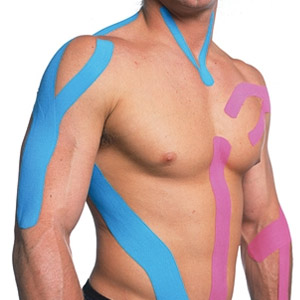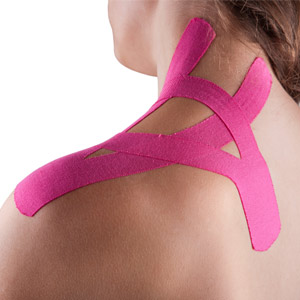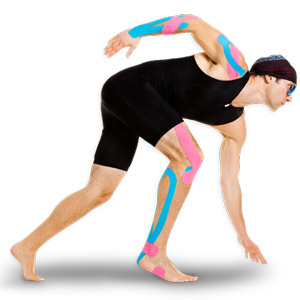Sports strapping is designed to help keep joints or bones in place either during movement or to help immobilise a limb. It also helps to protect ligaments and enables athletes professional and recreational alike to compete or move with decreased pain when there is not perfect joint function.
What is Kinesio-Tape?
Kinesio-Tape is a relatively new form of taping that is used by specially trained therapists mainly in a sports setting. The tape can be stretched 40%-60% of its resting length and has no medicinal properties. The thickness and weight of the tape is designed to approximate the weight and thickness of skin.
How does Kinesio-Tape work?
The following are the current theories of how properly applied Kinesio Tape works.
On skin, the Kinesio Tape pulls the upper layers of skin, creating more space between the dermis and the muscle. The space created is believed to relieve pressure on the lymph channels in the area between the muscle and the dermis, creating more space for lymph flow and thus better lymph drainage through an affected area.
Removes roadblocks that normally slow down the healing process.
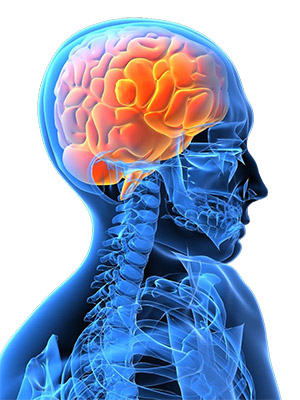
This space also houses various nerve receptors that send specific information to the brain. When the space between the epidermis and the muscle is compressed, such as during an injury, these nerve receptors are compressed and send information to the brain regarding continuous touch, light touch, cold, pain, pressure, and heat.
This information causes the brain to send out certain signals to the body on how to react to particular stimuli. Kinesio Tape alters the information that these receptors send to the brain and causes a less reactive response in the body, allowing the body to work in a more normal manner and removing some of the roadblocks that normally slow down the healing process.
Better muscle performance
Kinesio Tape also is felt to affect deeper tissues in the body. Increased space theoretically allows muscles greater contractility, which in turn pushes more fluid through the muscle, resulting in better muscle performance. The end results are believed to be reduced muscle fatigue, increase in range of motion, and better quality of muscle contraction.
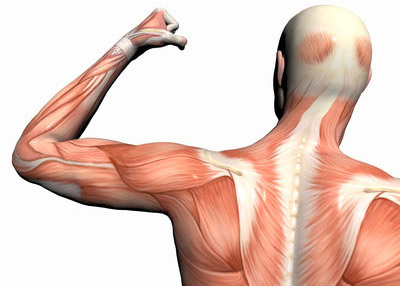
Improves joint alignment
Kinesio Tex Tape is used to improve joint alignment by affecting the muscles and fascia and can reduce poor function of a joint by influencing opposing muscle groups and joint mobility.
Fascia and lymph have an intimate relationship with each other. Fascia is a material that divides and separates the muscles and internal organs and helps to provide support against gravity in some parts of the body. Lymph removes fluids and chemical substances in the muscles. Lymph channels pass though fascia between the bone and the muscle and superficially between the skin and the muscle. Lymph ducts range in size from smaller than a hair to 2 cm lymph nodes. Major lymph channels can be found in the groin, neck, and armpits. When the flow of lymph is restricted or increased, an accumulation of fluid occurs behind the congested area, resulting in swelling that decreases space between the muscle and skin, causing the body to react to a painful stimulus.
There are six basic concepts of the Kinesio Taping technique
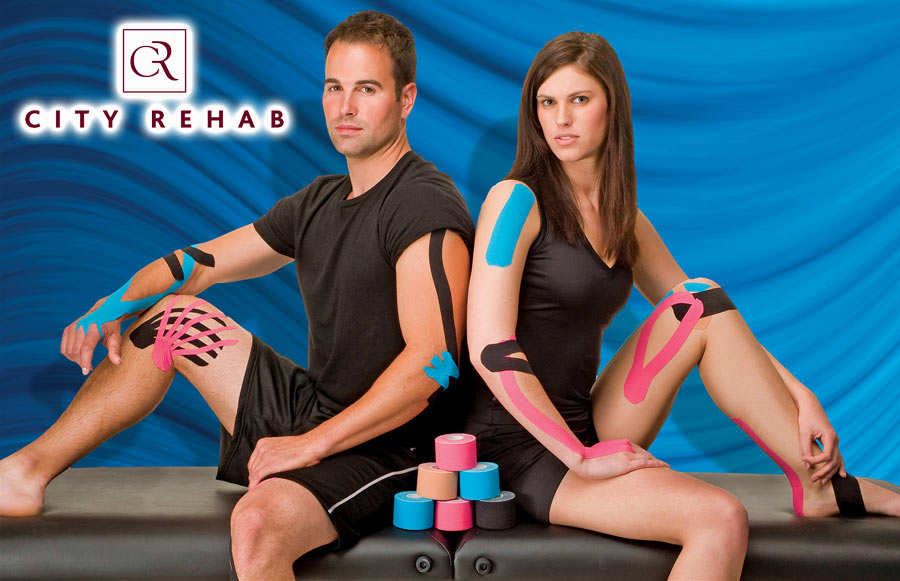
There are six basic concepts of the Kinesio Taping technique called corrections. They are: mechanical, fascia (fascial), space, ligament/tendon, functional, and circulatory/ lymphatic. Mechanical corrections are used for improved stability and biomechanics. Fascia or fascial corrections create or direct movement of fascia. Space corrections are used for decreasing pressure over a target tissue. Tendon/ligament corrections decrease stress on a ligament or tendon.
Helps reduce scars
Kinesio Taping has also been shown to affect scars. Reductions of adhesions and pitting, softening, flattening, improved pliability, and reduction of contractures have been seen in some patients.
Learn more about sports massage Liverpool .


